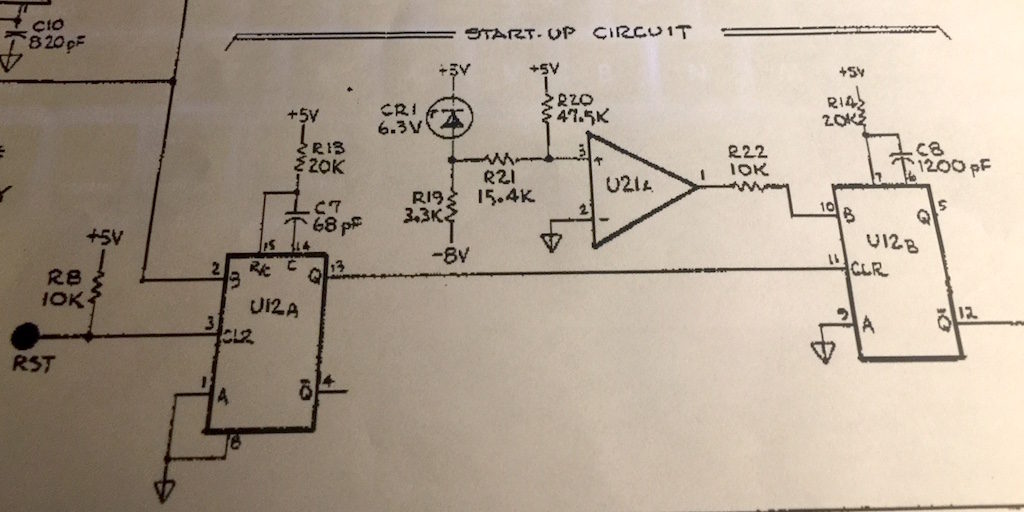After cleaning the synthesizer inside and out, I replaced multiple screws that were missing from the internal metal frame, and bolted down the power supply, which was obviously replaced in the past (without putting it back in properly). Despite the TLC, the reset issue continues.
While I am quite sure the caps in the PS need replacing, I took the +5 regulator out of the equation by supplying it with my bench power supply, so the input to that regulator is now rock solid (per scope measurement) That hasn’t impacted the reset problem. Other power supplies are still questionable, like the -8 VDC unregulated supply which has a low frequency ripple on it that is about 1 Vpp.
The Controller card in the 3335A is quite old, obviously (the design dates to 1976). It is based on a Motorola 6800 CPU (privately labeled for HP at the time). Since resetting was the issue, I dug into the service manual and schematic, to discover that there is a power-on reset circuit on the card intended to hold the CPU in reset until the power supplied have stabilized long enough for the processor to start executing code. It is based on a 74LS123 multivibrator and a opamp used as a voltage detector (driven from +5 regulated and -8 unregulated supplies). The schematic is shown below:
The Q’ (the ‘ means NOT, as in Q-not) output of U12B above is the RESET’ signal that goes to the CPU on the controller card and (HORRORS) travels unbuffered off the card through multiple feet of unshielded cables to the HP-IB card on the rear of the instrument. (ED: Whoever designed the Controller card for HP back in 1976 certainly wasn’t well informed as to noise issues with NMOS inputs — a fact attested to by the layout as well.) U21 forms a voltage detector circuit which presents a ‘0’ to the B input of U12B when the voltage is stable. The other half of U12A is fed from a 2 MHz off-card source and is used to guarantee that the RESET’ signal meets the minimum low time for a valid reset.
The good news is that by pulling the B input of U12B low the reset issue goes away. So it isn’t noise on the RESET’ line itself, but is coming from the valid power detector. The root cause is either noise on the +5 regulated supply or the -8 unregulated supply. Replacing the ancient Caps (about $150 worth) should resolve the issue.









